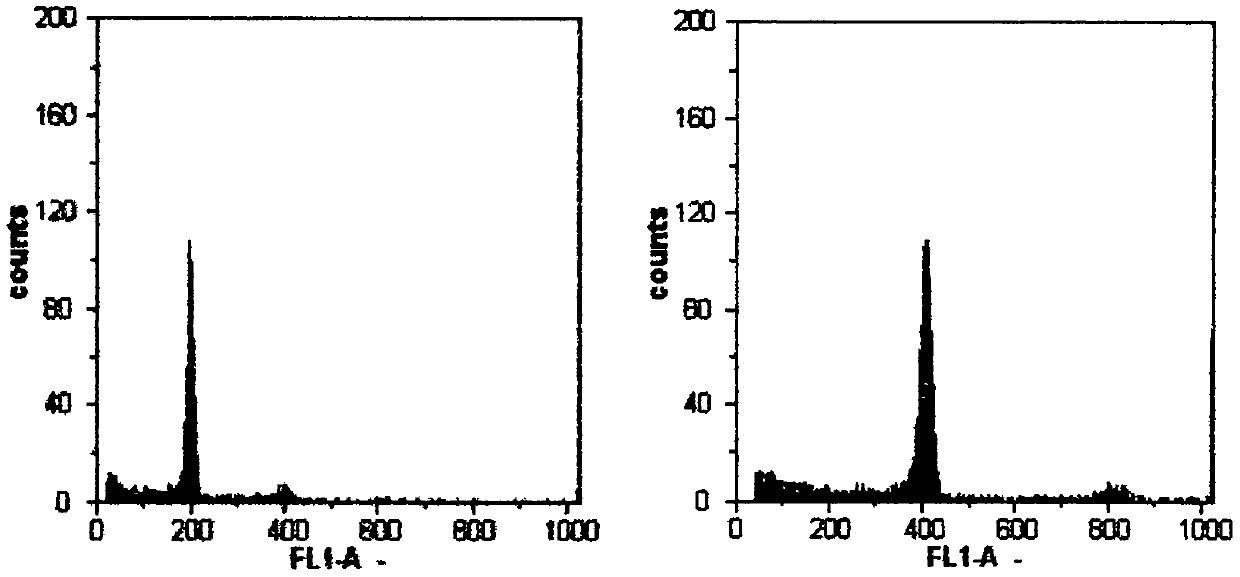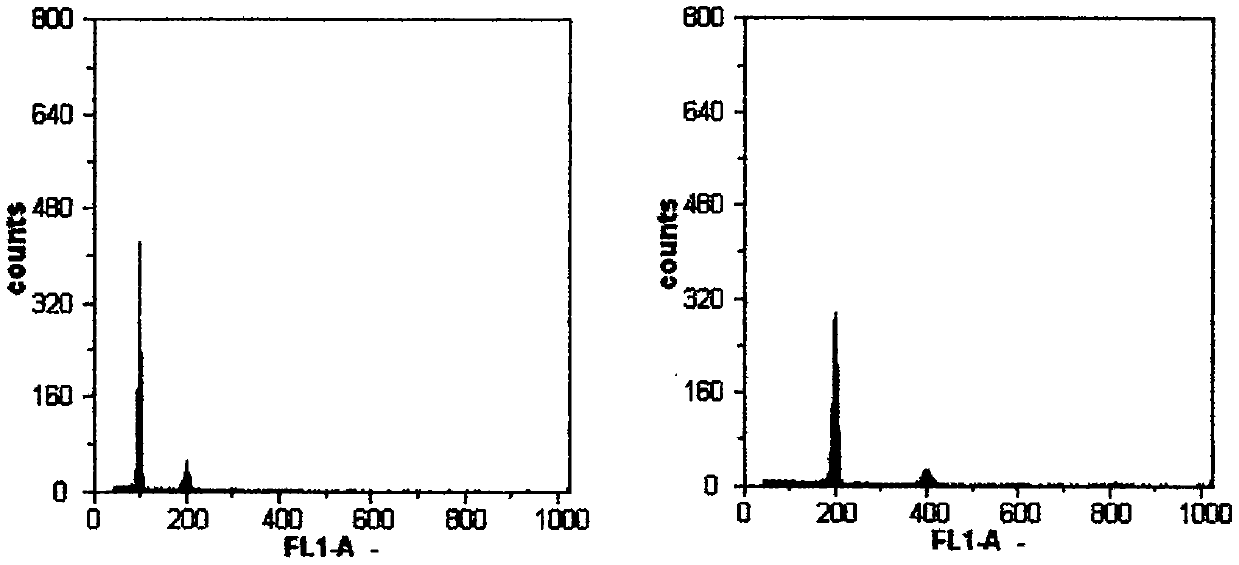Chromosome doubling method for pepper or eggplant haploid plant
A chromosome doubling and haploid technology, applied in the field of plant tissue culture, can solve the problems of low success rate of one-time doubling, time-consuming and labor-intensive
- Summary
- Abstract
- Description
- Claims
- Application Information
AI Technical Summary
Problems solved by technology
Method used
Image
Examples
Embodiment 1
[0025] Example 1: Chromosome doubling method of pepper haploid plants:
[0026] Pepper flower buds whose pollen development period is mononucleate and marginal stage were retrieved from the planting shed, surface-sterilized with 10% sodium hypochlorite for 20 minutes under aseptic conditions, and rinsed with sterile water for 3 times. The anthers were stripped off and inoculated in the induction medium (MS basic medium added with 0.1mg / L BA, 0.1mg / L IAA, 0.01mg / L NAA) to obtain embryoid bodies, and the embryoid bodies were transferred to the Grow into plantlets in the MS basic medium of the growth regulator; then transfer the plantlets to the rooting and strong seedling medium (MS basic medium supplemented with IBA 1mg / L), and finally obtain the regenerated plants of pepper pollen;
[0027] Select 30 pepper pollen regenerated plants with a plant height of 3cm to 5cm and 3 to 4 leaves (measured as haploid plants by flow cytometry), remove the large leaves, keep the root syste...
Embodiment 2
[0032] Example 2 : Eggplant haploid plant chromosome doubling method:
[0033] Eggplant flower buds whose pollen development period was mononucleate and marginal stage were retrieved from the greenhouse, and surface-sterilized with 10% sodium hypochlorite for 10 minutes under aseptic conditions, and rinsed with sterile water for 3 times. The anthers were stripped off and inoculated in the induction medium (MS basic medium added with 0.1mg / L~1mg / L KT, 0.1mg / L~1mg / L IAA, 0.01mg / L~0.05mg / L NAA, 0.1%~ 0.3% activated carbon) to obtain embryoid bodies, the embryoid bodies are transferred to the MS0 medium without any growth regulators, and grow into plantlets; then the plantlets are transferred to rooting and strong seedling medium (MS basic medium Add IBA 1mg / L), finally obtain eggplant pollen regenerated plants;
[0034] Select 40 eggplant regenerated plants with a plant height of 3cm-5cm and 3-4 leaves (determined as haploid plants by flow cytometry), remove the large leaves a...
PUM
 Login to View More
Login to View More Abstract
Description
Claims
Application Information
 Login to View More
Login to View More - R&D
- Intellectual Property
- Life Sciences
- Materials
- Tech Scout
- Unparalleled Data Quality
- Higher Quality Content
- 60% Fewer Hallucinations
Browse by: Latest US Patents, China's latest patents, Technical Efficacy Thesaurus, Application Domain, Technology Topic, Popular Technical Reports.
© 2025 PatSnap. All rights reserved.Legal|Privacy policy|Modern Slavery Act Transparency Statement|Sitemap|About US| Contact US: help@patsnap.com


